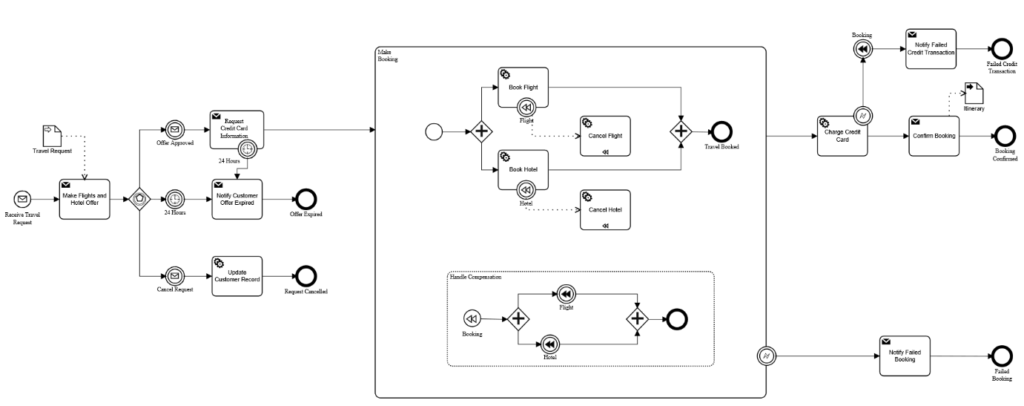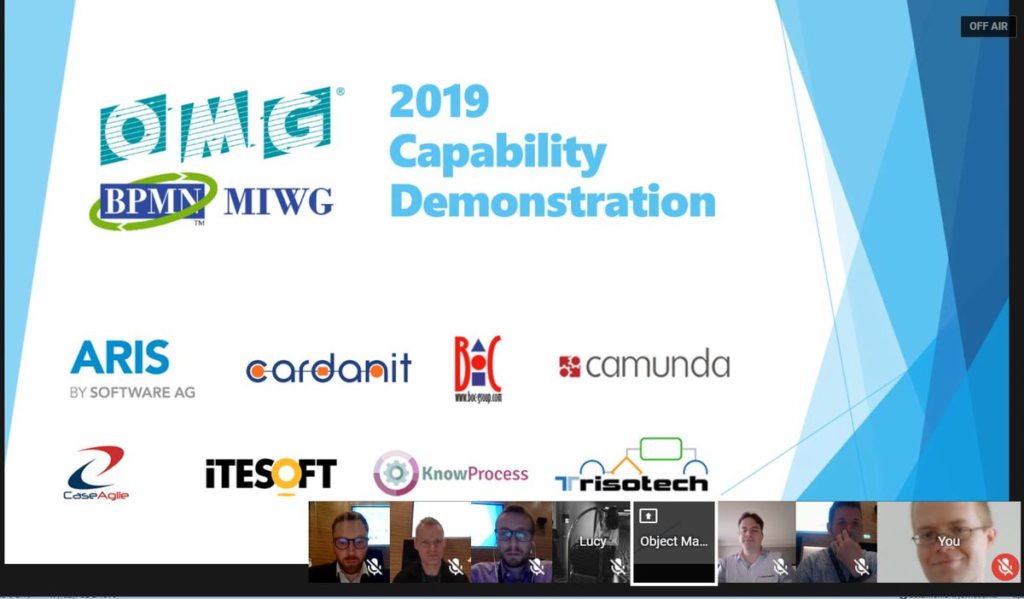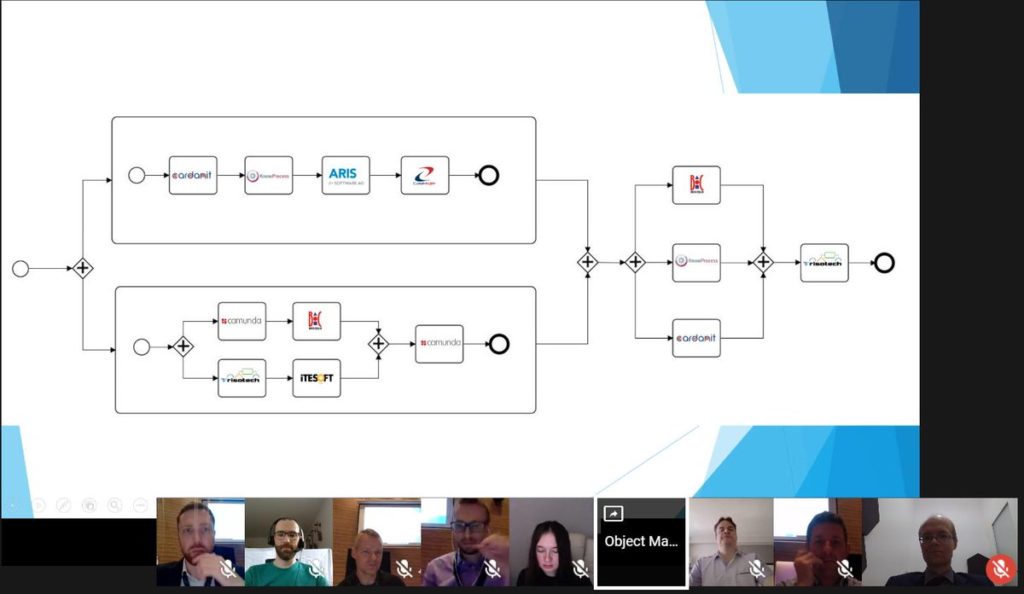Previous post about BPMN MIWG demo from 2018 showed you how to use Data Objects in practice. But, as you know, plain Data Objects and Data Stores are not everything you can do with data in BPMN.
That’s why our next capability demo which took part on June 17th 2019 during Object Management Group conference in Amsterdam covered other types of Data Objects. However this was not everything as we covered too other more advanced BPMN aspects.
You can learn more about BPMN MIWG, see recordings of past demos and test cases on our page: http://www.omgwiki.org/bpmn-miwg/doku.php
Below you can see a diagram (from the specification), which we used for the purpose of our demonstration.
As usual, this diagram will soon become new test case for the BPMN MIWG (I will update the post when it’s ready).
You can see the full recording of the demo below.
Below you can see the raw screenshots I did during the live session. I will update them with nicer looking pictures when the slides are available on Slideshare.
This time we had 8 participating companies (with 9 tools):
In case you are curious – cardanit is a new name of the BeePMN which you know from previous demos. Other company names should be familiar for you 🙂
Denis starts the session with an introduction of the BPMN MIWG and describes which new elements will be covered during this session: Data Inputs and Data Outputs, Event-based Gateway, Compensation Tasks along with compensation flows plus Event Sub-Process.
At 6:43 you can see our demo diagram along with info how will the demo flow.
At 7:25 participants introduce themselves and at 9:57 the actual demo begins.
There were many things happening at once, so I will prepare a step by step description for you soon – stay tuned.
Finally we finished with a diagram (nearly) identical as expected. Why nearly?
Somehow during the collaborative work one Sequence Flow was connected in a slightly different way than we expected 😉 which was noticed by one of eagle-eyed participants from the audience. Curiously we did not notice it till it was the final import stage…
At 26:18 you can see how it gets fixed.


